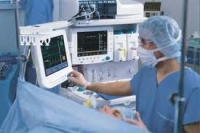What Type of Anesthesia Is Best for Rhinoplasty?
 Once made a decision on rhinoplasty with one of the Californias plastic surgeons, anesthesia is a chief apprehension for most people. Even though methods and safety of anesthesia have improved considerably over the past decades, it still absorbs a small risk. Predominance of major complications related with facial plastic surgery may be due to general anesthesia such as DVT. The facial plastic procedure itself only rarely is the reason for a major complication. Consequently, when choosing the right type of anesthesia for rhinoplasty, safety should be the main concern for you as well as your rhinoplasty surgeon.
Once made a decision on rhinoplasty with one of the Californias plastic surgeons, anesthesia is a chief apprehension for most people. Even though methods and safety of anesthesia have improved considerably over the past decades, it still absorbs a small risk. Predominance of major complications related with facial plastic surgery may be due to general anesthesia such as DVT. The facial plastic procedure itself only rarely is the reason for a major complication. Consequently, when choosing the right type of anesthesia for rhinoplasty, safety should be the main concern for you as well as your rhinoplasty surgeon.
Interestingly, there are various anesthesia options available and you should discuss these diverse anesthesia techniques with your rhinoplasty surgeon. The anesthesia type is crucial to where the rhinoplasty surgeon will determine to perform his procedure: surgeons office, surgical center or a hospital. These various surgical settings also determine patient privacy in comfort.
Now, we inform you a variety of anesthesia alternatives, their usual settings, advantages and disadvantages of each. The financial part should not guide one towards choosing one anesthesia technique over the other.
Contents
General Anesthesia for Rhinoplasty Surgery in California
General anesthesia means that the patient is completely asleep and not aware of any surroundings. The patient is intubated, which means that a tube is placed in ones throat (trachea) which is connected to an anesthesia machine. By this means, all control of breathing function is managed by this breathing machine and the anesthesiologist who monitors the patient: heart rate, hear rhythm, blood oxygen level, and blood pressure etc. The qualified anesthesiologist utilizes all these information to determine which inhalation gases and intravenous medications to use for the patient.
Although there is no conclusive study comparing general anesthesia with other methods for rhinoplasty, many patients alike stay away or fear from general anesthesia and prefer less invasive options instead. The surgeons training, experience and comfort play an important role in his choice for anesthesia but in general, most surgeons use general anesthesia for rhinoplasty surgery. One of the main benefits is complete patient comfort and protection of the airway in case of bleeding. Bleeding is more associated with general anesthesia because inhalation medications can relax blood vessels which increase blood flow to the nose.
Facility
Hospital, accredited surgical centers. Some surgeons have a surgical suit in their offices that are accredited for general anesthesia.
Advantages
Painless procedure, no memory of the procedure, monitoring of body systems by anesthesiologist, protection of airway by breathing tube.
Disadvantages
Most invasive option of anesthesia; lack of ability to talk to patient during the procedure; more frequent post-operative nausea and vomiting are associated with general anesthesia; complications with lung is possible; delayed regaining conscious from anesthesia sometimes prolonged hang-over feeling; possibly increased blooding issues during rhinoplasty surgery.
Price
The most expensive option; the operating room and the anesthesiologist frequently charge separate fees.
Conscious Sedation for Rhinoplasty in California
During conscious sedation the patient is relaxed, does not experience discomfort and is unaware of its surroundings. This is different from general anesthesia, with conscious sedation the patient is breathing on his/her own, without a need for breathing anesthesia machine. Usually, extra oxygen is given through small plastic tubing placed near the mouth. The surgeon numbs the nose with local anesthetic solution like Xylocaine or Marcaine. The anesthetist monitors the patients vital signs and delivers the medications through an IV line. Most of these medications are very short acting which requires a closed monitoring and experienced anesthetist to make sure sufficient but not too much medications are administered. Once the IV medication is discontinued, the patient recovers full consciousness within a few minutes with a smooth awakening without coughing and retching.
This anesthesia method requires an anesthesiologist experienced with conscious sedation, a skill usually acquired by working in outpatient surgical centers. Twilight anesthesia seems to grow in popularity with the modern patient and rhinoplasty surgeons. The issues with conscious sedation for rhinoplasty in two aspects: One, the patient may be too lightly sedated and therefore uncomfortable during the rhinoplasty and second, the patient might be deeply sedated and then preventing patient to breathe on his/her own, or prevent patient to swallow properly therefore blood dripping into the trachea. Each rhinoplasty surgeon prefer different of sedation level, some like it rather deep, others favor a lighter sedation. Discuss with your nasal specialty surgeon, which anesthesia he prefers and why. Ask, what problems or complications he has encountered in the past and how these issues where dealt with.
Facility
Hospital, or accredited surgical center.
Advantages
No general anesthesia with intubation; less post-operative nausea and vomiting, quick anesthesia recovery time; possibly decrease in blood loss during rhinoplasty.
Disadvantages
Requires expert anesthetist who is comfortable with conscious sedation for rhinoplasty. Since the airway is not protected, it may lead to aspiration of fluid into lungs.
Price
Similar price to general anesthesia; the operating room and the anesthesiologist often charge separate fees.
Local Anesthesia with Oral Sedation for Rhinoplasty in California
Many decades ago, this method was favored by most expert rhinoplasty surgeons who performed large number of rhinoplasties this way. Local anesthesia is analogous with the experience at the dentist office. The outer and inner portions of the nose are numbed with topical anesthesia and a mixture of Lidocaine and epinephrine; a process that is moderately painful.
Once the Lidocaine solution is injected into the nose, the region is entirely numb and the procedure can be performed painlessly. Since epinephrine tighten the blood vessels and no general anesthesia medications are adminestered, there is usually only minimal bleeding. Because patients are usually nervous before the rhinoplasty surgery, most surgeonss give relaxing medications (like Valium ) before the procedure, either orally or by injection.
Facility
Surgeons procedure room, free-standing surgical center.
Advantages
Minimal administration of drugs; no post-operative nausea and vomiting; no recovery from anesthesia; decreased blood loss; faster recovery; decrease in procedure time.
Disadvantages
Requires rhinoplasty surgeons comfortable with this technique; patient will feel Lidocaine needle sticks; cannot be performed for major rhinoplasty revision surgery.
Price
The least expensive just fee for operating room.
What is the Right Anesthesia for your Rhinoplasty in California?
You should have a detailed discussion with your rhinoplasty surgeon about anesthesia alternatives, the surgeons experience and recommendations. Then, determine whether this is what you want. Again, there is no one right or wrong way for anesthesia methods. The judgment should be made between you and your surgeon depending on the operative plan. How long does your surgeon need to perform your rhinoplasty surgery? Are there other procedures planed (i.e. chin implants, neck liposuction etc.)? What facilities he uses for his rhinoplasty surgeries?
Once all questions are answered and a good




